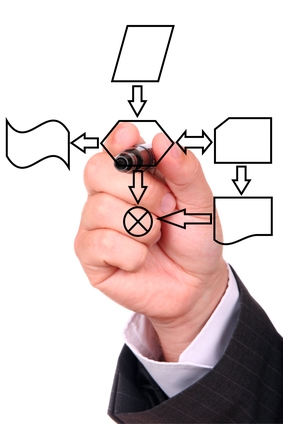Logistics process mapping is a great way for improving the logistics process and performance. The goal of logistics process mapping is to reduce costs, while improving service quality and customer satisfaction.
Process mapping has been around forever and to some it might seem old fashioned and passé, but it still works like a charm. Process mapping is simple and can deliver powerful results. Unlike, lean, six sigma, lean six sigma and other operational improvement methodologies, process mapping requires very little training so organizations can see results very quickly.
Process Defined:
A process consists of the steps, decisions, time and resources involved in the way work is accomplished.
Logistics Process Mapping Steps
Step 1: Get an executive sponsor. An executive sponsor can ensure the right people and right resources are available for the project. The sponsor can also make sure the process mapping project fits the company’s current goals. Besides, people work better when they know they need to report results back to the boss.
Step 2: Assemble a team consisting of the main stakeholders. Process mapping works best when someone owns the process. The process owner should be the person who is responsible for the work that the process creates. It is helpful to include people who work upstream and downstream from the process. To maximize productivity, the team should be limited to no more than five or six people.
Step 3: Map the process steps. The process steps along with decisions points, time required and responsible party should be documented.
I have found using a big white board to rough out the process steps works best. After a rough process map is created, then document the map with commonly used software. To start, do not use a fancy new process mapping software. You probably don’t it and it might make it harder to share the finished product. Note: The productive conversations and improvements are far more important than a perfect map.
Step 4: Identify and discuss problems and opportunities. Document the existing process, proposed process, issues, and opportunities. .
Step 5: Report progress and recommendations to the executive sponsor. At the same meeting, agree to open issues, assignments and implementation plans. Some improvements may be able to be implemented immediately, others will require additional investigation.
Bottom line: Logistics process mapping can quickly drive improvements in the logistics function. Typical improvements are reduced cost, improved service quality and happier clients.
Questions: Has your company use logistics process mapping? Would you recommend logistics process mapping?

